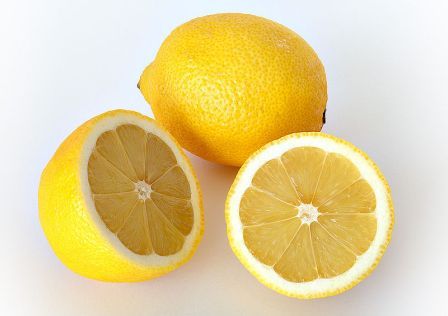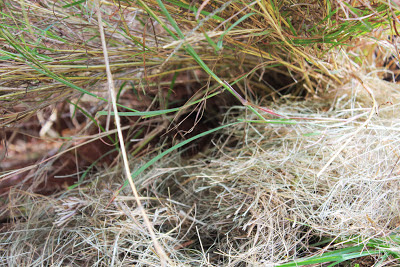I would love to have a garden that has all the trees from which one can harvest food - lemons, coconuts, marula, kei apples, olives and many more. Unfortunately planting some of these is dictated by the climate zone one lives in, so I'll have to settle for some of those that will indeed grow here in our frosty conditions.
Today I'm focusing on the Lemon Tree - songs have been written about it, poets have revered it and the health benefits have been advocated for hundreds of years.

The lemon is a small evergreen tree
(Citrus limon) originally native to Asia, and is also the name of the tree's oval yellow fruit. The fruit is used for culinary and non-culinary purposes throughout the world – primarily for its juice, though the pulp and rind (zest) are also used, mainly in cooking and baking.
Along with other citrus fruits, the lemon is one of the most widely consumed fruits in the world today. Apart from using the juice in all sorts of ways in the preparation of foods and cordials, lemon peels and the underlying white pith contain a number of health-giving substances.
 Flower of the lemon tree
Flower of the lemon tree
The lemon tree is perhaps one of the most valuable additions to the kitchen garden. The first lemon trees to arrive at the Cape (South Africa) were imported from St Helena and planted in the Company’s garden by Jan Van Riebeeck. These were the predecessors of the rough-skinned lemon that we grow today and which is frequently used as a rootstock onto which other citrus varieties are grafted.
An added benefit of having a lemon tree in your garden is that you will be visited by the magnificent Citrus Swallowtail butterfly – Papillio demodocus demodocus – which will not only feast on the nectar from the fragrant flowers, but use the leaves as the nursery and feeding grounds for its young.

We are all familiar with at least some of the uses of lemons in the kitchen and in the home:
• A drizzle of lemon juice over freshly cut fruits and vegetables stops the cut surfaces turning brown and unsightly in the presence of air. The juice contains ascorbic acid (Vitamin C) and lycopene, amongst other important phytochemicals (phytonutrients), which are anti-oxidants.
• Lemon juice brings out flavours, adds tartness to titillate the taste buds and reduces the richness of meat and seafood dishes.
• Various drinks, iced teas, lemonade, punches and the like, wouldn’t be the same without a dash of lemon juice, or a sliver of the fruit.
• The acidity and the pectin contained in lemons is an integral part of the jam-making process.
• Lemon juice is a healthier addition to salad dressings, mayonnaise and marinades than vinegar as it has an alkalising effect on the blood. Many of us are wondering why we are feeling tired, have aching joints, are overweight and suffer from Candida. Doctors Robert Young and Shelly Redford explain in their book, The pH Miracle, the negative effects on one’s metabolism of having acidic body fluids.
• Lemon zest (peel) is used to flavour a variety of dishes (both sweet and savoury) and preserves. It is laden with aromatic oils which most of us have, at least once in our lives, squeezed into the flame of a candle for a mini fireworks display. It is the lemon peel which contains the highest concentration of phytochemicals (or phytonutrients).
• And, of course, lemon juice is a rich source of Vitamin C and, therefore, an important part of the diet. Hot lemon and honey served up to cold and flu patients is soothing and healing.
• A slice of lemon in a glass of water makes it that much easier to drink the daily ‘eight glasses’ recommended for good health.
• There is a whole host of other medicinal benefits of the lemon. Those important phytochemicals have been shown to play a part in fighting cancer through their anti-oxidant properties, to prevent, and repair, damage to DNA, to destroy cancer cells and to prevent the spreading of tumours.
• The white pit, below the zest, contains rutin which strengthens the walls of blood vessels and helps to prevent heart and circulatory problems.
• I haven’t mentioned the other uses of lemon juice as an astringent for the skin, as a bleach for nappies and perspiration stains, an addition to furniture polish, and a cleaner for brass and polish. It removes urine smells, makes hair shine, removes mildew and black ink and so the list goes on.
It makes you think that having your very own lemon tree would be a very good idea and that a lemon a day would do a lot for your health and well-being. Visit your local nursery once you have identified a protected spot in your garden. Lemon trees do not take kindly to strong, drying winds or frost, and prefer well-drained, light soils.
 Green lemon
Green lemon
Lemons are used to make lemonade, and as a garnish for drinks. Lemon zest has many uses. Many mixed drinks, soft drinks, iced tea, and water are often served with a wedge or slice of lemon in the glass or on the rim. The average lemon contains approximately 3 tablespoons of juice. Allowing lemons to come to room temperature before squeezing (or heating briefly in a microwave) makes the juice easier to extract. Lemons left unrefrigerated for long periods of time are susceptible to mold.
Fish is marinated in lemon juice to neutralize the odor. The acid neutralizes the amines in fish by converting them into nonvolatile ammonium salts.
 Yellow lemon
Yellow lemon
Lemon juice, alone or in combination with other ingredients, is used to marinate meat before cooking: the acid provided by the juice partially hydrolyzes the tough collagen fibers in the meat (tenderizing the meat), though the juice does not have any antibiotic effects.
Lemons, alone or with oranges, are used to make marmalade. The grated rind of the lemon, called lemon zest, is used to add flavor to baked goods, puddings, rice and other dishes. Pickled lemons are a Moroccan delicacy. Numerous lemon liqueurs are made from lemon rind.

All great cooks use lemons. Here are a few recipes to try out.
Lemon Curd
The most delicious spread for hot toast, scones and muffins. It tastes so good that you can eat it by the spoonful straight out of the jar. Use other citrus fruit or granadillas to make a change.
100g organic butter
200g organic sugar
4 organic eggs
Juice and grated rind of 4 lemons,
or 3 oranges and 1 lemon
or 2 lemons and the pulp of 4 granadillas
1. Melt butter and sugar in double boiler
2. Add well beaten eggs and juice and rind of lemons (and/or oranges or granadilla pulp).
3. Continue heating, stirring occasionally until the mixture has thickened like custard.
4. Pour into clean, heated jam jars.
5. Seal and store in a cool cupboard, or refrigerate.
6. Eat within a month. (Freezes well)
Lemon Cordial
A deliciously refreshing drink served with water or soda.
Juice of 10 to 12 lemons
Grated rind of 3 – 4 lemons
2½ kg organic sugar
1 packet tartaric acid (15ml or 1 tablespoon)
1 packet citric acid (15ml or 1 tablespoon)
1 packet Epsom salts (15ml or 1 tablespoon)
2 litres boiling water
1. Dissolve the sugar, tartaric acid, citric acid and Epsom salts in the boiling water.
2. Add the grated lemon rind and lemon juice. Mix together and allow to cool.
3. Pour the cordial into sterilised glass or plastic bottles and store in a refrigerator.
4. Dilute with water (or soda water) to taste.
Add ice cubes and a sprig of mint for a refreshing summer drink or add boiling water and a slice of lemon for a winter drink.
Lemon and basil risotto
125g organic butter
300g Arborio rice
1 onion – finely chopped
1 celery head, finely chopped
1 bunch celery leaves
1 clove garlic, minced
150 ml dry white wine
6 tablespoon fresh organic basil
1 litre vegetable stock
Juice and zest of 4 organic lemons
100 g grated parmesan cheese
Salt and pepper to taste
1. Heat the stock and check for seasoning.
2. Gently sauté onions and garlic in butter until soft and add the garlic and chopped celery leaves and stir.
3. Add the rice and lightly sauté.
4. Add the white wine and allow to reduce.
5. Add the stock ladle for ladle, stirring constantly. Allow each ladle of stock to be absorbed before adding the next.
6. Constantly stir until the rice is cooked but still al dente.
7. Stir in most of the basil, lemon juice, zest and half the parmesan. Season to taste.
8. The consistency should be very creamy and soft.
9. Serve with remaining basil leaves and Parmesan cheese.
Lemon shortbread
100 g organic butter
90 g castor sugar
1 organic egg yolk
½ teaspoon vanilla
2 teaspoons lemon zest
1 teaspoon lemon juice
155 g cake flour
1. Preheat an oven to 150°C.
2. Cream the butter and sugar until light and creamy.
3. Add the egg yolk, vanilla, lemon zest and lemon juice, and mix well.
4. Sift in the flour and gently fold into the mixture.
5. Knead gently until the dough starts to come together.
6. Cover the dough in plastic and refrigerate for 2hours.
7. Lightly grease a baking tray.
8. Roll the dough out between two sheets of baking paper and even thickness.
9. Cut biscuits from dough and bake for 12 to 14 minutes.
10. Dust with castor sugar while still hot.
11. Let them cool slightly before transferring them to a cooling rack.
Preserved lemons
Delicious in salads, risottos, dressings, marinades and on sea food.
Fennel seeds
Coriander seeds
Cinnamon stick
Peppercorns
Bay leaves
Sea salt
Large fat lemons with the leaves still attached
1. In a bowl mix the spices into the sea salt.
2. Cut a cross into the lemons – almost to the base, but so that the quarters stay together.
3. Push the seasoned salt into the lemon segments and pack the lemons as tightly as possible into an airtight jar.
4. The less space there is between the lemons the more attractive it will look and you won’t need to use so much salt.
5. The lemons will be ready after one month of preserving, and will last for about 2 years.
When required, the lemons are removed from the jar and all the white pith should be cut from the yellow peel or zest and discarded. The zest is then shredded, thinly slices of finely chopped.
Recipes from Biophile Magazine (CopyLeft)
 Pickled lemons, a Moroccan delicacy
Pickled lemons, a Moroccan delicacy
 Lemon marmalade on a slice of bread
Lemon marmalade on a slice of bread
Sources : Wikipedia and Biophile Magazine


















































